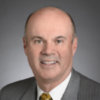If you have an employer-sponsored retirement account like a 401(k) or 403(b) and you do not want to manage the account yourself (or use a one-size-fits-all target date fund), there may be another option. About 40% of 401(k) and 403(b) plans now offer a self-directed option.1 Different custodians have different names for this option. Fidelity’s option is called BrokerageLink®, while Schwab calls their option Personal Choice Retirement Account® (PCRA). Many of our clients rely on us to manage their employer-sponsored accounts, and access to a self-directed option lets us add more value.
The self-directed option opens a brokerage account inside your employer’s retirement account. This brokerage account often offers a broader menu of investment choices than the standard pre-selected options. The self-directed menu may include previously unavailable asset classes and investment options with lower expenses.
While more investment choices may be appealing, there are issues to be aware of before taking this direction.
- Time: Setting up the self-directed option takes time and effort, and you will have to select and purchase your own investments. Will you have the time to open a self-directed account, create an asset allocation from scratch, and monitor the performance for needed investment changes?
- Fees: Transaction or account maintenance fees may differ for self-directed accounts from your primary 401(k) or 403(b). Those fees may be offset by carefully selecting lower-cost funds, but this requires thoughtful analysis.
- Account Size: If your retirement account is small, starting with the standard fund options makes more sense.
- Ease of Rebalancing: Most standard employer plans provide options to automate the rebalancing of the account. All rebalancing of investments within a self-directed account will be entirely up to you.
At Rodgers & Associates, we manage our clients’ 401(k) or 403(b) accounts through the self-directed options with Fidelity’s BrokerageLink® or Schwab’s PCRA because:
- Investment Choice: The typical employer-sponsored plan offers twenty-eight investment choices, and usually more than half are one-size-fits-all target date funds.2 A self-directed account provides a vast selection of investments that can be screened for the best performers at the lowest cost.
- Asset Location: A client 401(k) or 403(b) is often only one part of a client’s investment portfolio, and it should be coordinated with the rest of their investments to balance their New Three-Legged Stool. The employer retirement plan is a tax-deferred leg, so investments like fixed income and real estate should primarily be located here. More tax-efficient, growth-oriented investments should be held in taxable accounts.
- Rebalancing: This is another area where coordination is essential. Rebalancing should look across a client’s accounts to determine where changes can be made tax efficiently. A tax-deferred, self-directed account will often be the best place to adjust from a tax perspective.
- Expenses: The total plan cost for the average 401(k) participant was 0.58% (including investment, administrative, and other fees). But it was 1.42% for employer plans with less than $1 million in assets, and 55.8% had less than $1 million in assets.3 There are many opportunities to reduce internal expenses for our clients with the proper investment selection.
Many people lack the time or expertise to rebalance their accounts on an ongoing basis. It is vital to rebalance tax efficiently in conjunction with all other accounts.
This is where asset location comes into play as part of the overall investment strategy. Asset location means strategically balancing investments between tax-advantaged, tax-free, and taxable accounts to maximize after-tax returns.
Asset location is essential for a few reasons. First, it manages risk by spreading your investment dollars across different assets. Second, it is important from a tax perspective, and some investments are naturally more tax-efficient than others. Exchange-traded funds, for example, tend to have a lower holdings turnover ratio than other types of funds.
Getting asset location right is as fundamental as managing asset allocation. Over time, it can affect how much you pay in taxes on your investments and how much of your returns you get to keep. Periodically review your investment portfolio to ensure you are investing your money in the right places. A recent study found that tax efficiency could extend the life of retirement savings by seven and a half years.4
An adviser can vet all investment options and use their expertise to select the most appropriate investments based on the client’s situation. A skilled adviser can also help ensure proper diversification, both within the account and across the accounts, which is key to long-term success.
Individuals sometimes feel they can beat the market by picking entry and exit points from their investments. Market timing is often not a successful long-term strategy, and having the steady hand of an adviser at the wheel of the retirement account can help avoid this pitfall.
Insights:
- Some employer retirement plans offer a self-directed account option as an investment choice.
- The typical employer retirement plan averages twenty-eight investment choices, with half being target date funds.
- Asset location is essential to diversifying investments across account types and maximizing after-tax returns.
- Source: Kiplinger. Does Your 401(k) Come with a Self-Directed Brokerage Account Option? February 11, 2021
- Source: Morningstar. 100 Must-Know Statistics About 401(k) Plans, September 4, 2020
- Source: Morningstar. 100 Must-Know Statistics About 401(k) Plans, September 4, 2020
- “Retire Right: The Critical Importance of Tax-Efficient Withdrawal Strategies to Portfolio Longevity” Whitepaper by William Reichenstein, Ph.D.



